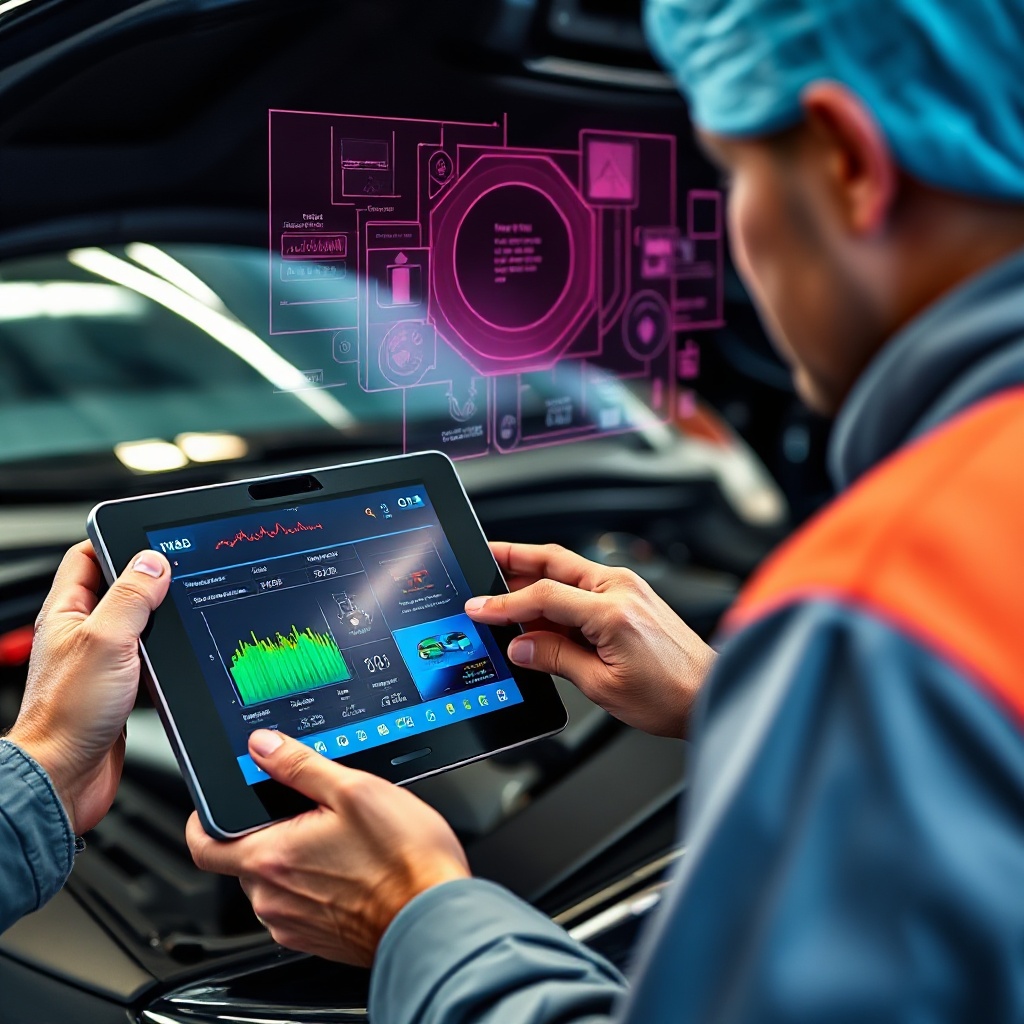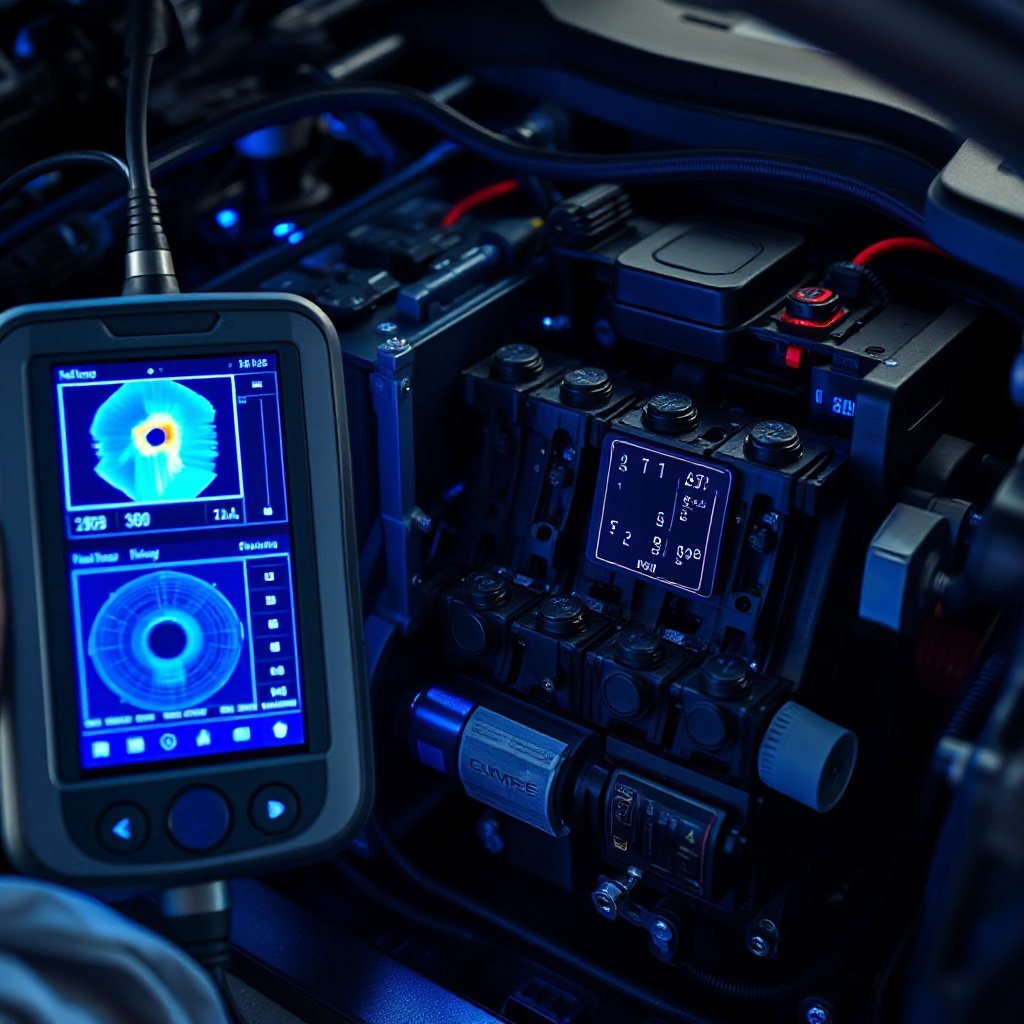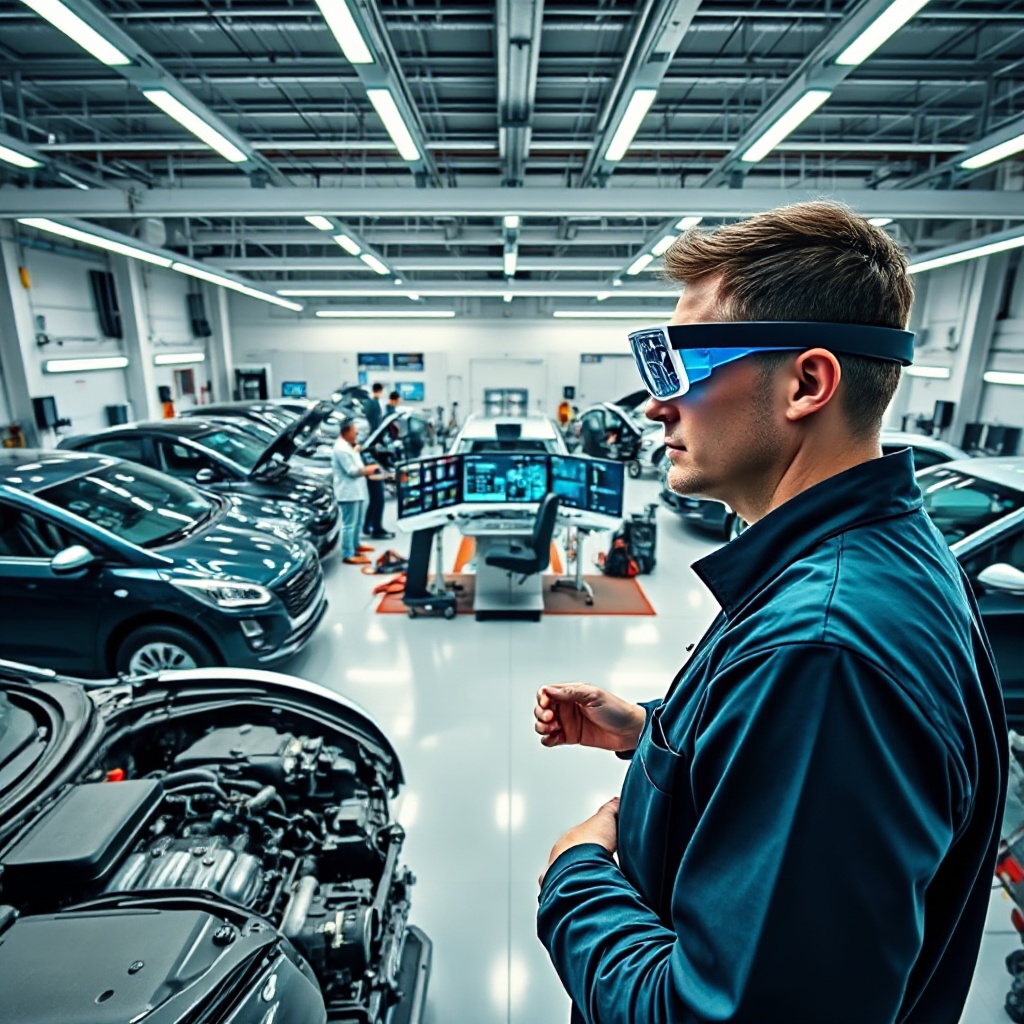
AI revolutionizes auto diagnostics, shifting from reactive to predictive maintenance with specialized EV solutions and remote capabilities for modern vehicles.

Drivetech Partners
Automotive repair and maintenance stands at the precipice of revolutionary change as artificial intelligence and machine learning technologies become increasingly integrated into vehicle diagnostic systems. This shift is especially vital as electric vehicles gain market share, presenting complex diagnostic challenges that traditional methods can't effectively address.
Key Takeaways
AI-powered diagnostic tools are transforming vehicle maintenance from reactive to predictive, preventing failures before they occur
Electric and hybrid vehicles present unique challenges requiring specialized diagnostic approaches for high-voltage systems
Remote diagnostics and over-the-air updates are minimizing the need for physical vehicle access
Modern diagnostic tools offer cloud-based analytics and mobile interfaces, improving accessibility and collaboration
Technicians need new training and skills to effectively work with advanced diagnostic systems and electric vehicles

How AI and Machine Learning Are Redefining Automotive Diagnostics
The marriage of artificial intelligence with automotive diagnostics has created a paradigm shift in how vehicle issues are identified and resolved. Modern AI-powered diagnostic tools now leverage neural networks and big data to process information from multiple sources simultaneously. These advanced systems analyze real-time sensor data alongside historical service records to provide insights that simply weren't possible before.
What makes these systems truly revolutionary is their ability to process thousands of data points at once, identifying patterns and potential issues that even experienced human technicians might miss. Current market leaders in this space include Bosch ADAS.ai, Launch Tech X-431 PAD VII, and Autel MaxiSys Ultra AI—each bringing unique capabilities to the diagnostic landscape.

Perhaps one of the most significant advantages of AI-enhanced diagnostics is the ability to perform remote troubleshooting. Technicians can now diagnose and solve many software-related issues without physical access to the vehicle, using over-the-air updates to implement fixes. This capability reduces downtime for vehicle owners and increases efficiency for service providers.
Predictive Maintenance: From Reactive Repairs to Proactive Solutions
Traditional vehicle maintenance has typically followed a reactive model—fix problems after they occur. AI is flipping this approach on its head by enabling predictive maintenance strategies. By analyzing vehicle sensor data and usage patterns, these systems can forecast component failures before they happen.
The benefits of this predictive approach are substantial. Vehicle owners experience fewer unexpected breakdowns, improved reliability, and extended component lifespan. For service providers, predictive maintenance significantly cuts repair costs by enabling interventions before small issues become major failures.
AI diagnostics also minimize human error in the repair process. The real-time anomaly detection capabilities can identify problems instantly and provide actionable repair suggestions without human intervention. This increases diagnostic accuracy and reduces misdiagnoses, leading to more efficient repairs and better customer outcomes.
Meeting the Unique Challenges of Electric and Hybrid Vehicles
Modern electric and hybrid vehicles represent an entirely new frontier for automotive diagnostics. These vehicles contain over 90 million lines of code, dozens of ECUs, and extensive network systems (CAN, FlexRay, Ethernet). This complexity makes traditional diagnostic methods increasingly inadequate for identifying EV-specific issues.

High-voltage battery systems, electric drivetrains, and regenerative braking systems all require specialized diagnostic approaches. Advanced scan tools now support battery management system (BMS) analysis, including state of charge monitoring, voltage/fault code analysis, and cell imbalance detection.
Several tools have emerged to address these unique challenges. The UDIAG X-95 pro supports over 70 EV models, while other common EV/hybrid diagnostic tools include the Snap-on Solus and Toyota Techstream systems. These specialized tools can diagnose issues unique to electric drivetrains and power systems that would be impossible to identify with conventional equipment.
Next-Generation Diagnostic Hardware and Software Solutions
The physical form of diagnostic tools has evolved dramatically. All-in-one tablet scanners with intuitive user interfaces have become the industry standard. These mobile diagnostic devices combine high-resolution displays, multi-core processors, and Android-based operating systems to create powerful diagnostic hubs.
Professional-level diagnostic tools now offer capabilities that were once exclusive to dealerships. These include full system scans, component activation, and special function programming. This democratization of diagnostic capabilities allows independent shops to perform services that previously required dealer visits.
Cloud-based diagnostic solutions have also transformed the landscape by supporting remote data storage, fleet-wide analytics, and seamless updates. Platforms like the Snap-on Intelligent Diagnostics system offer predictive data analysis, repair guidance, and cloud storage capabilities. Similarly, the Autel MaxiSys Ultra AI provides AI-assisted troubleshooting and ECU coding with an intuitive interface that reduces the learning curve for technicians.
Impact on Service Providers and Workshops
For service providers and workshops, AI-powered diagnostics represent both an opportunity and a challenge. On the positive side, these tools allow independent workshops to perform dealership-level services, boosting revenue opportunities. The reduced diagnostic time translates to increased shop efficiency and throughput—allowing more vehicles to be serviced in less time.

However, these advances also require technicians to develop new digital literacy skills and specialized training, particularly for working safely with high-voltage EV systems. This training investment can be significant but pays dividends through improved diagnostic accuracy, which reduces warranty claims and comebacks while improving customer satisfaction.
Workshops equipped with advanced AI diagnostic tools can differentiate themselves in an increasingly competitive market. Customers are becoming more aware of these technologies and often seek out shops that can provide the most accurate and efficient diagnostic services.
The Changing Relationship Between Automakers, Workshops and Vehicle Owners
AI diagnostics are creating more transparent communication between all stakeholders in the vehicle service ecosystem. Vehicle owners benefit from faster, more reliable repairs and extended vehicle health through preventive care. They can also receive more detailed explanations of issues and necessary repairs, building trust in the service relationship.
Automakers can gather field data to improve vehicle designs and preemptively address emerging issues. This continuous feedback loop helps create more reliable vehicles and can reduce warranty costs for manufacturers.
Subscription-based diagnostic platforms are creating new business models for both OEMs and independent service providers. The diagnostic relationship increasingly extends beyond physical workshops through connected car technology, allowing for continuous monitoring and maintenance suggestions that keep vehicles operating at peak performance.
Future Trajectory: Where Automotive Diagnostics is Heading
Looking ahead, the integration of IoT and edge computing will enable real-time monitoring with reduced latency. This will allow for even faster diagnostic capabilities and quicker response times to emerging issues.
Augmented reality (AR) diagnostic overlays will guide technicians through complex repairs, making specialized knowledge more accessible and reducing the skill barrier for complex repairs. This technology will be particularly valuable as electric and hybrid vehicles represent an increasing portion of new vehicle sales by 2025.
Perhaps most intriguing is the convergence of autonomous vehicles and AI diagnostics, which will enable self-diagnosing and potentially self-repairing systems. As vehicles become more sophisticated, their ability to monitor and maintain their own systems will increase, potentially creating self-healing vehicle systems that can address minor issues without human intervention.
The AI revolution in automotive diagnostics isn't just changing how we fix cars—it's fundamentally transforming the entire concept of vehicle maintenance from a reactive necessity to a proactive, data-driven science.
Sources
Sibros Tech - Transforming Vehicle Maintenance with AI-Driven Diagnostics
Number Analytics - Advanced Hybrid Vehicle Troubleshooting
Globibo Blog - How AI and Machine Learning Are Shaping the Future of Automotive Diagnostics
Udiag Tech - Car Diagnostic Tools in 2025 Trends, Technologies, and Innovations
Iconiferz - Top Automotive AI Diagnostic Systems in 2025: Expert Insights Future Trends






